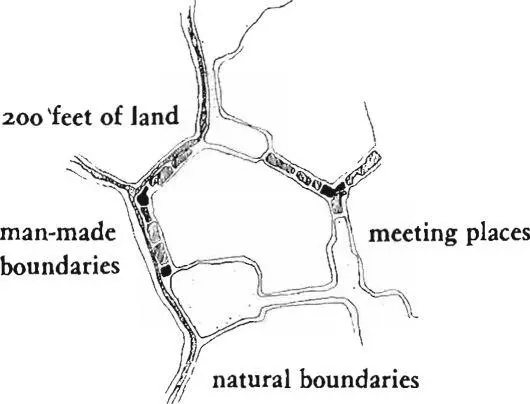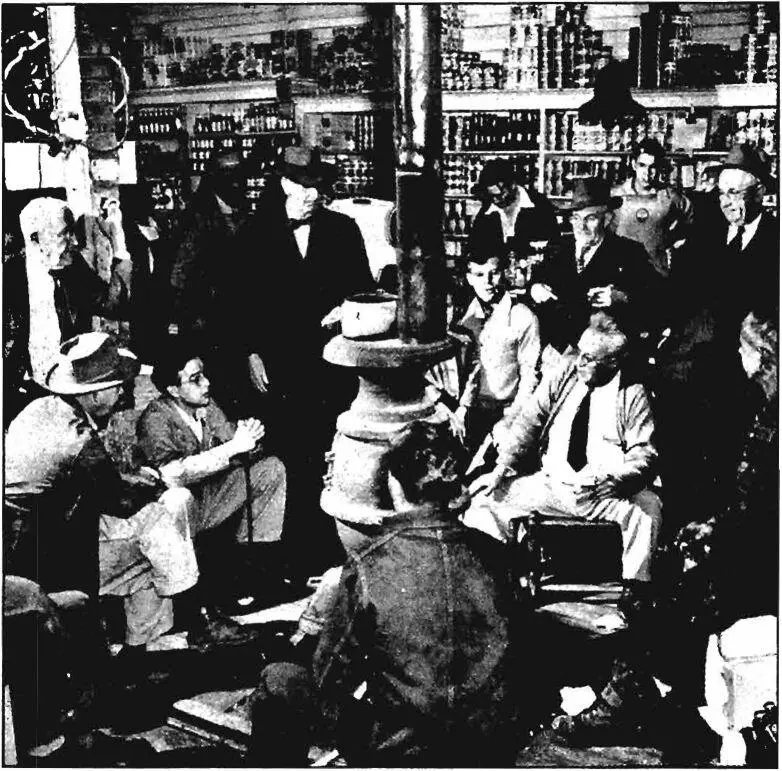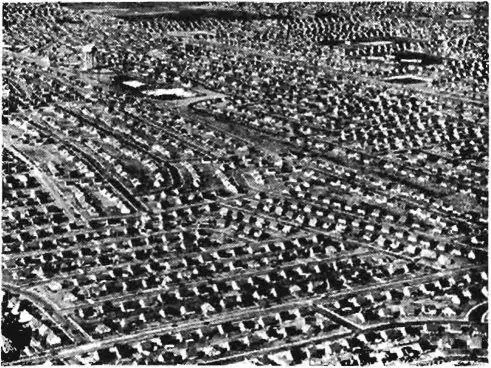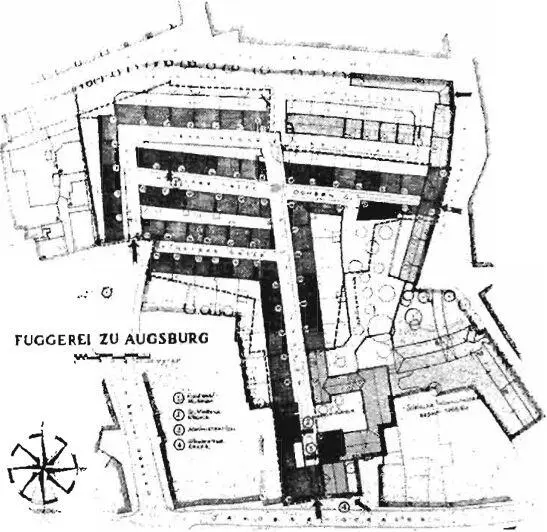Christopher alexander - A pattern language
Здесь есть возможность читать онлайн «Christopher alexander - A pattern language» весь текст электронной книги совершенно бесплатно (целиком полную версию без сокращений). В некоторых случаях можно слушать аудио, скачать через торрент в формате fb2 и присутствует краткое содержание. Жанр: Прочая научная литература, на английском языке. Описание произведения, (предисловие) а так же отзывы посетителей доступны на портале библиотеки ЛибКат.
- Название:A pattern language
- Автор:
- Жанр:
- Год:неизвестен
- ISBN:нет данных
- Рейтинг книги:3 / 5. Голосов: 1
-
Избранное:Добавить в избранное
- Отзывы:
-
Ваша оценка:
- 60
- 1
- 2
- 3
- 4
- 5
A pattern language: краткое содержание, описание и аннотация
Предлагаем к чтению аннотацию, описание, краткое содержание или предисловие (зависит от того, что написал сам автор книги «A pattern language»). Если вы не нашли необходимую информацию о книге — напишите в комментариях, мы постараемся отыскать её.
A pattern language — читать онлайн бесплатно полную книгу (весь текст) целиком
Ниже представлен текст книги, разбитый по страницам. Система сохранения места последней прочитанной страницы, позволяет с удобством читать онлайн бесплатно книгу «A pattern language», без необходимости каждый раз заново искать на чём Вы остановились. Поставьте закладку, и сможете в любой момент перейти на страницу, на которой закончили чтение.
Интервал:
Закладка:
r

two of the most distinctive communities in the greater Bay Area, are both almost completely isolated. Sausalito is surrounded by hills and water; Point Richmond by water and industrial land. Communities which are cut off to some extent are free to develop their own character.
Further support for our argument comes from ecology. In nature, the differentiation of a species into subspecies is largely due to the process of geographic speciation, the genetic changes which take place during a period of spatial isolation (see, for example, Ernst Mayr, Animal Species and Evolution , Cambridge, 1963, Chapter 18: “The Ecology of Speciation,” pp. 556-85). It has been observed in a multitude of ecological studies that members of the same species develop distinguishable traits when separated from other members of the species by physical boundaries like a mountain ridge, a valley, a river, a dry strip of land, a cliff, or a significant change in climate or vegetation. In just the same way, differentiation between subcultures in a city will be able to take place most easily when the flow of those elements which account for cultural variety—values, style, information, and so on—is at least partially restricted between neighboring subcultures.
Therefore:
Separate neighboring subcultures with a swath of land at least 200 feet wide. Let this boundary be natural—wilderness, farmland, water—or man-made—railroads, major roads, parks, schools, some housing. Along the seam be-
13 SUBCULTURE BOUNDARY
tween two subcultures, build meeting places, shared functions, touching each community.

-{• 4*
Natural boundaries can be things like the countryside (7), SACRED SITES(24), ACCESS TO WATER(25), QUIET BACKS(59), ACCESSIBLE CREEN(60), POOLS AND STREAMS(64), STILL WATER
(71). Artificial boundaries can include rinc roads (17), parallel ROADS(23), WORK COMMUNITIES (4 I ) , INDUSTRIAL RIBBONS(42), TEENAGE SOCIETY(84), SHIELDED PARKING(97). The interior organization of the subculture boundary should follow two broad principles. It should concentrate the various land uses to form functional clusters around activity—activity nodes (30), work community (41). And the boundary should be accessible to both the neighboring communities, so that it is a meeting ground for them—eccentric nucleus (28) . . .
I 4 IDENTIFIABLE NEIGHBORHOOD**

8o
. . . the mosaic of subcultures(8) and the community of7000 (12) are made up of neighborhoods. This pattern defines the neighborhoods. It defines those small human groups which create the energy and character which can bring the larger community of7000 (12) and the mosaic of subcultures(8) to life.
People need an identifiable spatial unit to belong to.
 |
| Today’s pattern of development destroys neighborhoods. |
They want to be able to identify the part of the city where they live as distinct from all others. Available evidence suggests, first, that the neighborhoods which people identify with have extremely small populations; second, that they are small in area; and third, that a major road through a neighborhood destroys it.
I. What is the right population for a neighborhood?
The neighborhood inhabitants should be able to look after their own interests by organizing themselves to bring pressure on city hall or local governments. This means the families in a neighborhood must be able to reach agreement on basic decisions about public services, community land, and so forth. Anthropological evidence suggests that a human group cannot coordinate itself to reach such decisions if its population is above 1500, and many people set the figure as low as 500. (See, for example, Anthony Wallace, Housing and Social Structure , Philadelphia Housing Au-
 |
| A famous neighborhood: the Vuggerei in Augsburg. |
thority, 1952, available from University Microfilms, Inc., Ann Arbor, Michigan, pp. 21-24-.) The experience of organizing community meetings at the local level suggests that 500 is the more realistic figure.
2. As far as the physical diameter is concerned, in Philadelphia, people who were asked which area they really knew usually limited themselves to a small area, seldom exceeding the two to three blocks around their own house. (Mary W. Herman, “Comparative Studies of Identification Areas in Philadelphia,” City of Philadelphia Community Renewal Program, Technical Report No. 9, April 1964.) One-quarter of the inhabitants of an area in Milwaukee considered a neighborhood to be an area no larger than a block (300 feet). One-half considered it to be no more than seven blocks. (Svend Riemer, “Villagers in Metropolis,” British Journal of Sociology , 2, No. I, March 1951, pp. 31—43.)
3. The first two features, by themselves, are not enough. A neighborhood can only have a strong identity if it is protected from heavy traffic. Donald Appleyard and Mark Lin tell have found that the heavier the traffic in an area, the less people think of it as home territory. Not only do residents view the streets with heavy traffic as less personal, but they feel the same about
14 IDENTIFIABLE NEIGHBORHOOD
the houses along the street. (“Environmental Quality of City Streets,” by Donald Appleyard and Mark Lintell, Center for Planning and Development Research, University of California, Berkeley, 1971.)
neighborhood with light traffic 2000 vehicles/day 200 vehicles/peak hour 15-20 mph Two-way
Residents speaking on "neighboring and visiting”
I feel, it’s home. There are warm people on this street. I don't feel alone.
Everbody knows each- other.
Definitely a friendly street.
Residents speaking on "home territory”
The street life doesn't intrude into the home . . . only happiness comes in from the street.
I feel my home extends to the whole block.
neighborhood with moderate traffic 6000 vehicles/day 550 vehicles/peak hour 25 mph Two-way
Residents speaking on “neighboring and visiting”
You see the neighbors but they aren't close friends.
Don't feel there is any community any more )but people say hello.
Residents speaking on “home territory”
It's a medium place — doesn't require any thought.
Читать дальшеИнтервал:
Закладка:
Похожие книги на «A pattern language»
Представляем Вашему вниманию похожие книги на «A pattern language» списком для выбора. Мы отобрали схожую по названию и смыслу литературу в надежде предоставить читателям больше вариантов отыскать новые, интересные, ещё непрочитанные произведения.
Обсуждение, отзывы о книге «A pattern language» и просто собственные мнения читателей. Оставьте ваши комментарии, напишите, что Вы думаете о произведении, его смысле или главных героях. Укажите что конкретно понравилось, а что нет, и почему Вы так считаете.












